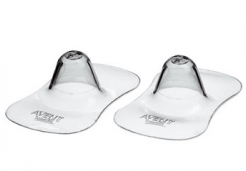 The value of natural feeding is unlikely to be challenged by anyone. Nevertheless, some women experience difficulties in the process of breastfeeding, such as: pain in the nipples or discomfort during the application. Not understanding the problem and how to solve it, mothers are often in a hurry to buy breast pads for breastfeeding. Let's understand the topic.
The value of natural feeding is unlikely to be challenged by anyone. Nevertheless, some women experience difficulties in the process of breastfeeding, such as: pain in the nipples or discomfort during the application. Not understanding the problem and how to solve it, mothers are often in a hurry to buy breast pads for breastfeeding. Let's understand the topic.
All about breast pads for breastfeeding
Breast pads for feeding - special latex or silicone products, the purpose of which is to facilitate the process of breastfeeding.
Unfortunately, the unjustified use of pads often not only does not solve the existing problem, but also generates certain violations of the entire process of breastfeeding.
When is the use of breast pads acceptable?
- The formation of lactation. At first, breastfeeding can be very painful. The main mistake is incorrect attachment to the chest, as a result of which the baby sucks "in vain", causing unpleasant sensations.
- Baby refuses mother’s breast. If for a long time the mother expressed milk and gave it to the baby from the bottle, then the baby will begin to prefer the bottle, because it is much easier to eat milk from the bottle than from the mother’s breast: in order to get milk, you need to put a lot more effort than during the meal out of the bottle. Lining on the nipples in shape and stiffness resembles a bottle nipple, so when switching from a bottle to breastfeeding, the use of linings may become appropriate (we read about how to accustom a child to the chest after a bottle).
- Nipple cracksaccompanied by unbearable pain during feeding (About nipple cracks and how to feed).
- Severe birth injuriesleading to slow development of the nervous system in the child, are the cause of lethargic or abnormal sucking. In this case, breast pads are used to teach sucking.
- Premature, weakened babies the first time after birth there is not enough strength to suck out milk. Because of this, insufficient emptying of the breast and hypotrophy (weight loss) in the child occur.
- Teething. During teething, children are especially moody and restless, and try to “scratch” the gums with any object, including their mother’s nipple. Babies often bite their breasts while feeding, which is undoubtedly very unpleasant and painful.To save nipples from bites, sometimes lining on the breast for feeding helps.
- Anomalies in the structure of the nipple: flat, retracted, or too large nipple.
- Anomalies in the structure of the oral cavity in a child is a shortened bridle.
It’s important to note that the use of pads for breastfeeding is always an extreme measure in solving any of the above problems.
Modern doctors recommend using pads only in exceptional cases and under the systematic supervision of a breastfeeding specialist. Only in case of inefficiency of other techniques for applying to the breast, it is possible to use pads on the nipples, as a short-term auxiliary agent (here we wrote why breastfeeding consultants are often against breast pads).
A very useful article where there are many videos: How to properly attach the baby to the chest
What can the use of pads for breastfeeding lead to?
[sc: rsa]
- In several studies, results were not in favor of overlays: a decrease in milk production of about half. This is due to the fact that the pads disrupt the psychological contact "mother-child". Because of this, the release of oxytocin, a pleasure hormone that relaxes the milk ducts and affects the production of milk, is disrupted.
- Even the thinnest silicone nipple liners with long use violate the sucking mechanism. The baby begins to suck faster and more intensively, because of this the pauses become longer. Such sucking is characteristic of the stage of extinction of lactation. The sucking technique is violated: the child compresses the jaw more (chewing the chest), sucks in a "vacuum" way;
- With the pad, feeding becomes longer in time. Milk leaks under it and the child does not eat up. Also, in order to get a portion of milk necessary for saturation, when using the breast pads for feeding, the baby is at the mother’s breast longer than it should be. Some babies get so tired of sucking that they fall asleep half-starved, as a result of which they often lose weight;
- When sucking with a pad, the baby often swallows air, which leads to increased flatulence, colic, regurgitation;
- The inconvenience of using at night or on the street when walking;
- Pads, with insufficient sterilization, can become a source of infection of the nipple. Women who have been using pads for a long time are more likely to experience breast candidiasis;
- With prolonged use of pads, addiction develops in them in the child and mother.
Basic types of linings
- Rubber is rarely sold in our time, and they are not recommended for use. Their design involves fastening to a plastic or glass base a conventional nipple for a bottle. As a result, the baby is sucking a few centimeters from the mother’s chest. As a result, there is no stimulation of the nipple, in addition, milk accumulates at the base of the lining, leaks and does not enter the baby’s mouth in the right amount.
- Latex pads are also rarely used. They are soft, have a yellowish tint, wear out quickly and absorb odors. They can also cause allergic reactions in infants.
- The most modern and harmless linings are silicone. They are hypoallergenic (do not cause allergies) and wear-resistant. They are flexible and thin plates, denser in the area of the nipple. Since they are very thin, the nipple receives the necessary stimulation to produce milk.
Top manufacturers
Philips Avent lining(hypoallergenic, made of the finest silicone, which has neither taste nor smell):
- Small protective covers Philips Avent;
- Philips Avent standard protective pads.
The ultra-thin material from which the Avent linings are made allows the baby to feel the mother's warmth while feeding, without violating the taste and tactile sensations.
(clickable pictures)
Medela Contact Lining:
- Size S (for premature babies and with a strained nipple diameter less than 1 cm);
- Size M (diameter of the strained nipple is 1 cm);
- Size L (strained nipple diameter over 1 cm).
Medel lining made of elastic and thin silicone. The material has neither taste nor smell. The shape of the pads allows the baby to have a natural tactile contact with the mother during feeding.
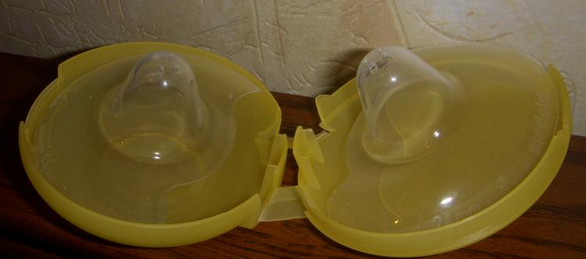
Ameda linings They have the usual round shape, are universal in use. Made of the finest silicone. Help change the shape of the nipple. The number of holes is 3.
How to choose
First, it is important to determine the size. If possible, you need to choose linings of different sizes and manufacturers, and measure. In this case, the nipple should be in a state of tension. If the baby is premature, it is best to take small pads, but you need to be sure that they fit the nipple.
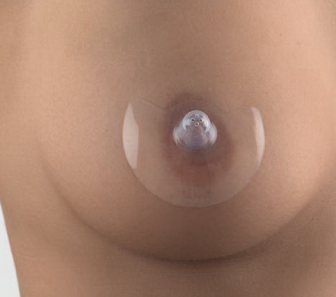 Nipple overlays should be easily put on at the base of the nipple, repeating its shape. In front, the nipple should not fit snugly on the pad, this only happens after the baby has started sucking. Then the nipple should be in contact with the holes in the pad. If during feeding the nipple does not fill the entire lining cavity, then it is large. If there is a feeling of friction and contraction - small.
Nipple overlays should be easily put on at the base of the nipple, repeating its shape. In front, the nipple should not fit snugly on the pad, this only happens after the baby has started sucking. Then the nipple should be in contact with the holes in the pad. If during feeding the nipple does not fill the entire lining cavity, then it is large. If there is a feeling of friction and contraction - small.
Today, rubber and latex nipples are considered poor quality due to the roughness of the material and possible allergic reactions. The best material for protective linings now is silicone. It provides delicacy and significantly reduces the risk of allergies. The feeling of warmth during feeding, the sense of arrival of milk indicate that the lining is made correctly.
How to use
- Before first use, the pad must be sterilized.
- It is necessary to bring the nipple into an excited state, unscrew the pad, and applying it to the nipple, wrap it back to the chest so that it fits tightly in the shape of the chest.
- It will be more convenient to put on a slightly damp pad, so it sits denser.
- So that the child wants to take a breast with a lining, you can drop a little milk on it.
- Cutout lining should be at the top, there will be the nose of the child.
- Sucking with a patch should be the same as without it: the child’s mouth is wide open and his lips should clasp his chest over the halos.
average price
The market offers a wide selection of protective pads for feeding from various manufacturers. The price for a couple of products in the kit - from 100 rubles and above, depends on the quality of the material, country of manufacture and brand.
Of course, when the question is about the health of the baby, it is better to give preference to proven brands that painstakingly develop products for children. Such firms, as a rule, do not spare money for numerous tests and studies, which gives a guarantee of product safety. Breastfeeding protective pads, which are more popular and trusted by consumers, are slightly more expensive. Their price varies from 300 to 500 rubles.
Proper care
Like a normal nipple, the pad must always be kept clean in order to avoid various infections in the baby. Frequent boiling of silicone and latex accessories is not recommended, as the polymer becomes stiff from them.
- Sterilize before first use. Boil a new overlay after purchase;
- Wash with soap and water. After each use, rinse and dry the product;
- Boil periodically. A single boil every other day for three minutes is enough;
- Sterilize with steam. If you have a steam sterilizer, you can refuse to boil. This treatment is gentle, so the silicone remains soft longer. Steam sterilization can be carried out daily for five minutes.
How to wean a child from pads
According to GV consultants, the technique of rejecting linings is no less important point in the instructions for use than their choice. It is important to remember that the less you use the accessory, the easier it will be to refuse.
- Start feeding in the pad and remove it quickly in the process. A hungry baby may not notice the “substitution” and calmly continue to eat;
- Offer unprotected breasts to sleepy crumbs. The most convenient time for the return of full-fledged natural feeding is the period of night sleep and after waking up. When the baby is sleeping, the likelihood that he will take your nipple is much higher;
- Reduce the area of silicone. Daily cut a small piece from the silicone nipple, thereby increasing the area of contact of the baby with the body. Gradually abandon the polymer forms completely;
If the baby is too attached to the pads and refuses to suckle without them, be patient. It may take you a couple of weeks to return to normal feeding.
- Spend more time with your baby. Carry it on your hands, sleep together. Constant contact with mom and breast availability at any time of the day or night will allow the baby to get used to it faster;
- Remove all breast imitators. It is necessary to get rid of everything that the baby can suck: lining, nipple. Gradually, the need to implement the sucking reflex will prompt him to "return to the chest";
- Supplement with expressed milk. If the baby cries under the breast and refuses to eat, feed it with your milk from a cup, pipette or spoon.Offer breasts before and after breastfeeding.
Reviews from forums
I fed my son through the pad for about five months. She didn’t bother with sterilization, she just washed it thoroughly and poured boiling water over it. The fact that if you feed through the pad - the child does not gain weight - I heard for the first time. IMHO this is nonsense. You can use strained milk from the bottle, but with the same milk from the chest through the lining - no?!?! Some nonsense. Do not fool yourself, feed so that this process gives you positive emotions, not pain. And everything will be alright.
I also fed through the linings for about 6 months. Sterilized the month to 3, then doused it with boiling water. Without them, I wouldn’t have a GV — flat nipples, I couldn’t grab a small one, so the lining for beckoning was a salvation. By the way, my relatives also tense the situation, that the pads are harmful to the child. I didn’t listen to anyone, I did as it was comfortable for me and Leva
What I wish you!What nonsense about problems with weight gain and digestion due to pads! the best GV is that in which the mother does not suffer and does not feel discomfort, otherwise the baby will not benefit from such feeding. And the fact that the baby may not want some kind of breasts, I also did not want the left one, so it often happens sooo much. So do not be nervous and feed in the way that is more convenient and calmer for you.Strain with a breast pump, it will be calmer and easier for the chest.We also read:How to choose a breast pump
It makes sense if your nipples are retracted and the baby cannot capture the nipple. And I just don’t see the point ... In any case, I do not advise buying in advance.
My baby from the very birth sucked so hard that I came out of the hospital with cracked nipples. A neighbor advised me to buy these pads. I bought, they are inexpensive, tried, but I did not like it. Pain sensations became slightly less, but trouble with feeding increased. Yes, and my daughter did not really like them. So lie. Used only 2 times.
And I would have disappeared without them, my little one would chew on me like that a month after birth, my nipples cracked, and I need to feed, I fed with tears in my eyes and closed my mouth so as not to scream from the pain. I put up with it, and when I saw the blood, I said ALL husband can’t do anything else, neither cream nor compresses helped, they just didn’t have time to heal, and then he brought me my life-saving silicone miracle. Then life just turned into paradise. And as soon as I felt that the nipples begin to hurt, I immediately But I used them not often 3 times with each daughter (and only when it was painful, as soon as the pain went away I removed them). They say the child gets used to it and then takes no breasts, I fed two of them like that, now I feed my little son. I don’t know what all this would have ended if my husband hadn’t bought them for me. I don’t even say if the child’s teeth come out early.


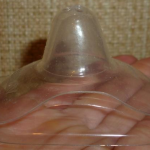
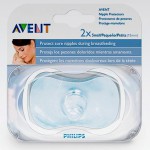



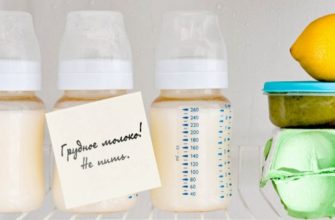
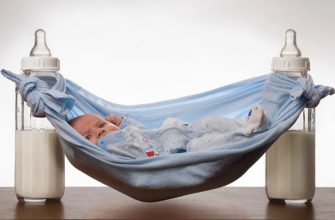
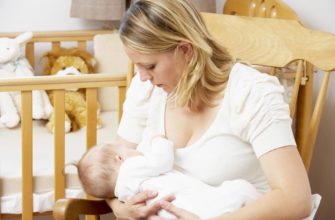

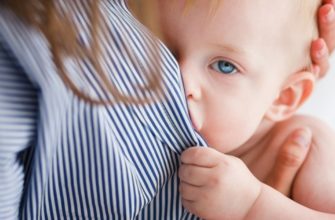
From my own experience I will say - these overlays from the word do not help at all.
My child did not take breasts. I bought pads, like, with them it’s easier for a child to take a nipple with his lips. Nothing like this! Only an extra psychological trauma for me and the child. Through them, he generally refused to even try to suck.
At first, I liked the use of linings, it was convenient for both me and the baby, but over time, milk began to disappear. Refused them and all, fortunately, was restored. But I had to get ahead.